Curly endive and escarole are both chicories of the same species. These two slightly bitter-tasting leafy greens can be eaten raw in winter or spring salads or added to soups where their tastes become mild.
Curly endive has narrow, finely cut, curly leaves. Escarole has smooth, rounded, broad leaves. Often, the names endive, escarole, and chicory are used interchangeably.
Kitchen Helpers from Amazon:
- Oster Vegetable Steamer
- Chef’s Knives Set of 6
- EZ Off Jar Opener for Weak Hands
- Pepper Core Remover Stainless Steel
- Kitchen Utensils – Set of 35

The peak season for curly endive and escarole is winter through early spring.
How to tell curly endive and escarole apart
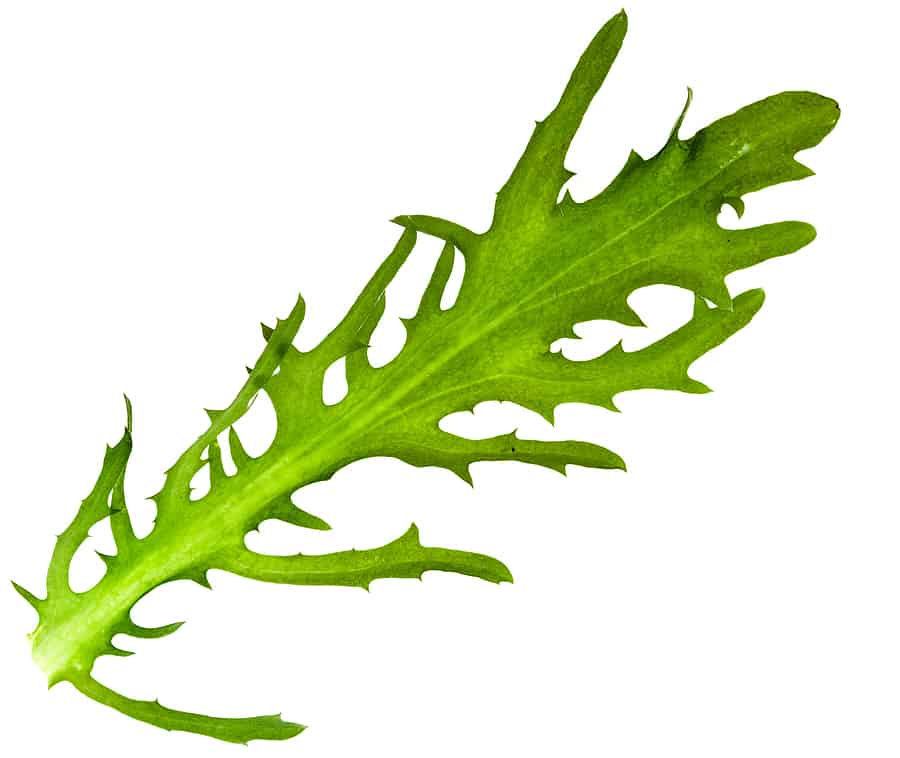
Curly endive or frisée
Curly endive or frisée –which is sometimes simply called chicory–is a loose-headed plant. The leaves are light green in the center graduating to dark green on the outer leaves. The inner leaves are mild-tasting and the outside leaves are slightly bitter.
Curly endive can have a bit of a prickly texture. It turns somewhat more tough and bitter as the weather warms.
Curly endive that is blanched creamy yellow in color—and usually flattened as the result of blanching with a board or shingle—is marketed as frisée or riccia, the French and Italian names for curly endive.
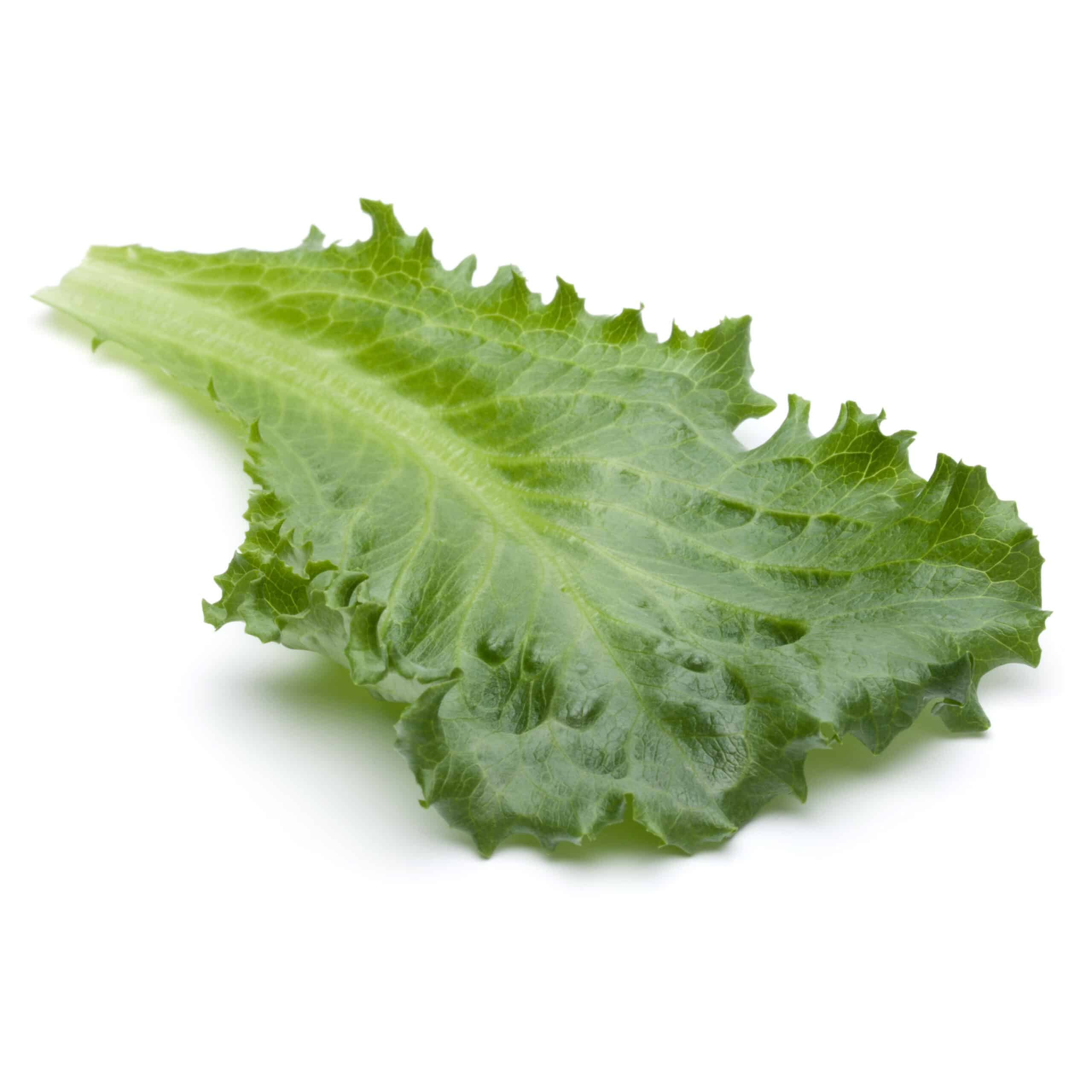
Escarole
Escarole—which is also called Batavian endive, batavia, and broad-leafed endive–forms a flattened head. The leaves are creamy yellow in the center graduating to light to dark green on the lightly ruffled edges. Escarole is usually less bitter tasting than curly endive.
The heart of escarole can be eaten raw in green salads. In the spring, you can add mustard and shallots or tomatoes, in the winter, add nuts and raisins.
Escarole is popular in Italian cookery—especially in soups where it is quite mild in flavor after cooking.
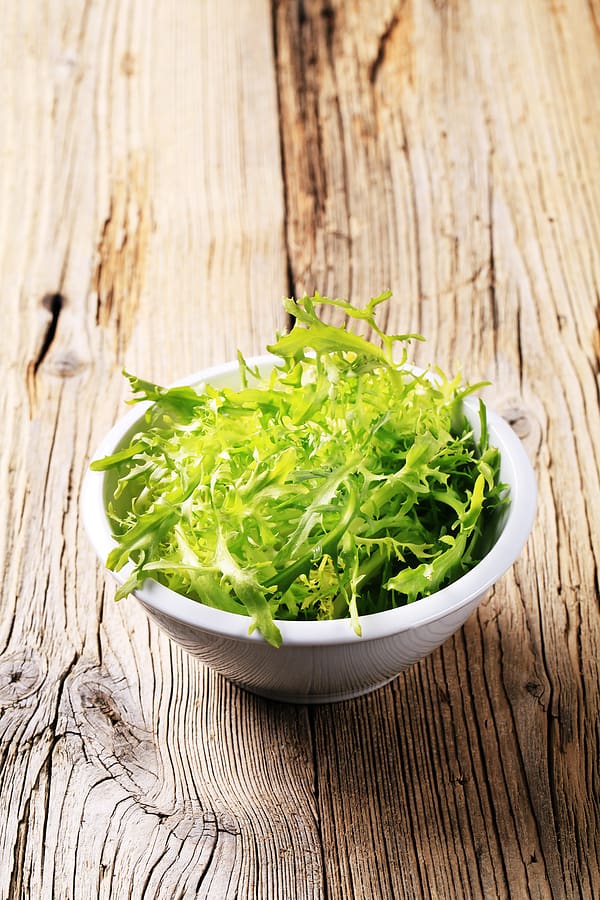
How to choose curly endive and escarole
- Select curly endive and escarole that is brightly colored with crisp, fresh leaves.
- Avoid leaves that are dry, flabby, or browning.
How to store curly endive and escarole
- Curly endive and escarole will keep tightly wrapped in a plastic bag in the refrigerator for up to 3 days.
How to prepare curly endive and escarole
- Wash and remove wilted leaves before using; cut out the core; remove the leaves by hand and tear or break them up.
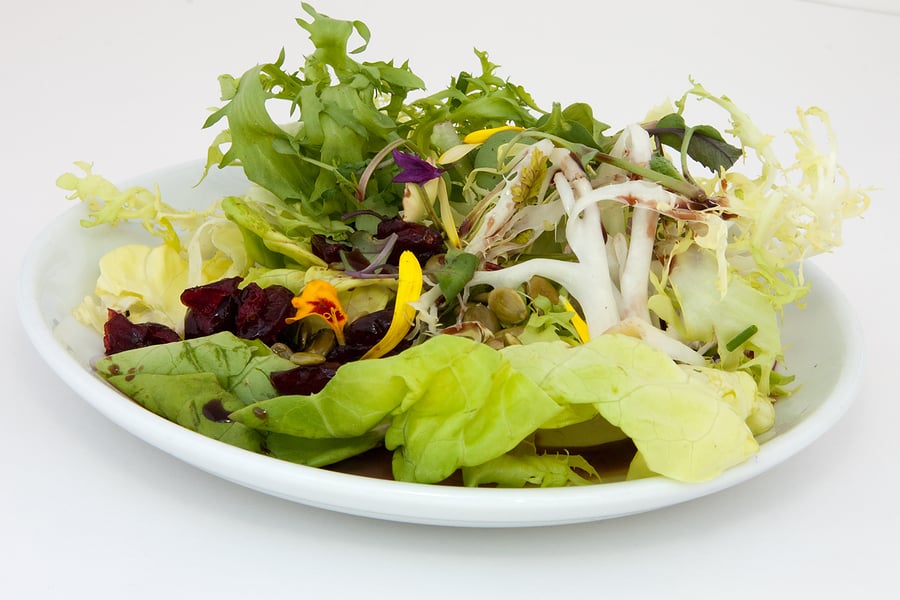
Curly endive and escarole serving suggestions
- Curly endive can be served raw with a vinaigrette that is flavored with shallots, mustard, or garlic. If the leaves are at all tough or bitter, it is best to serve curly endive cooked in soups or vegetable ragouts.
- Escarole can be served raw in salads or it can be sautéed and added to a soup.
- Sauté escarole in olive oil then serve with raisins and pine nuts.
How to wilt or sauté escarole
- Cook escarole in a saucepan or a skillet with just the water that clings to the leaves after washing.
- Add a sprinkling of salt and place the pan over low heat.
- Cover the pan so that the escarole steams in its own liquid.
- Shake the pan occasionally to prevent the escarole from sticking to the bottom. Escarole will cook in 3 to 5 minutes wilting down to about an eighth of its volume.
- Drain and press out the remaining liquid.
- Chop and serve with lots of butter.
Wilted escarole can also be prepared with minced garlic sautéed garlic in olive oil or hardboiled eggs.
Curly endive and escarole flavor partners
- Curly endive and escarole have flavor affinities for anchovies, bacon, cured black olives, eggs, pancetta, red pepper flakes, sweet-and-sour-sauces, and vinegar.
Curly endive and escarole nutrition
- Curly endive and escarole are rich in vitamin A, and also vitamins B and C. They also contain calcium, phosphorus, and iron.
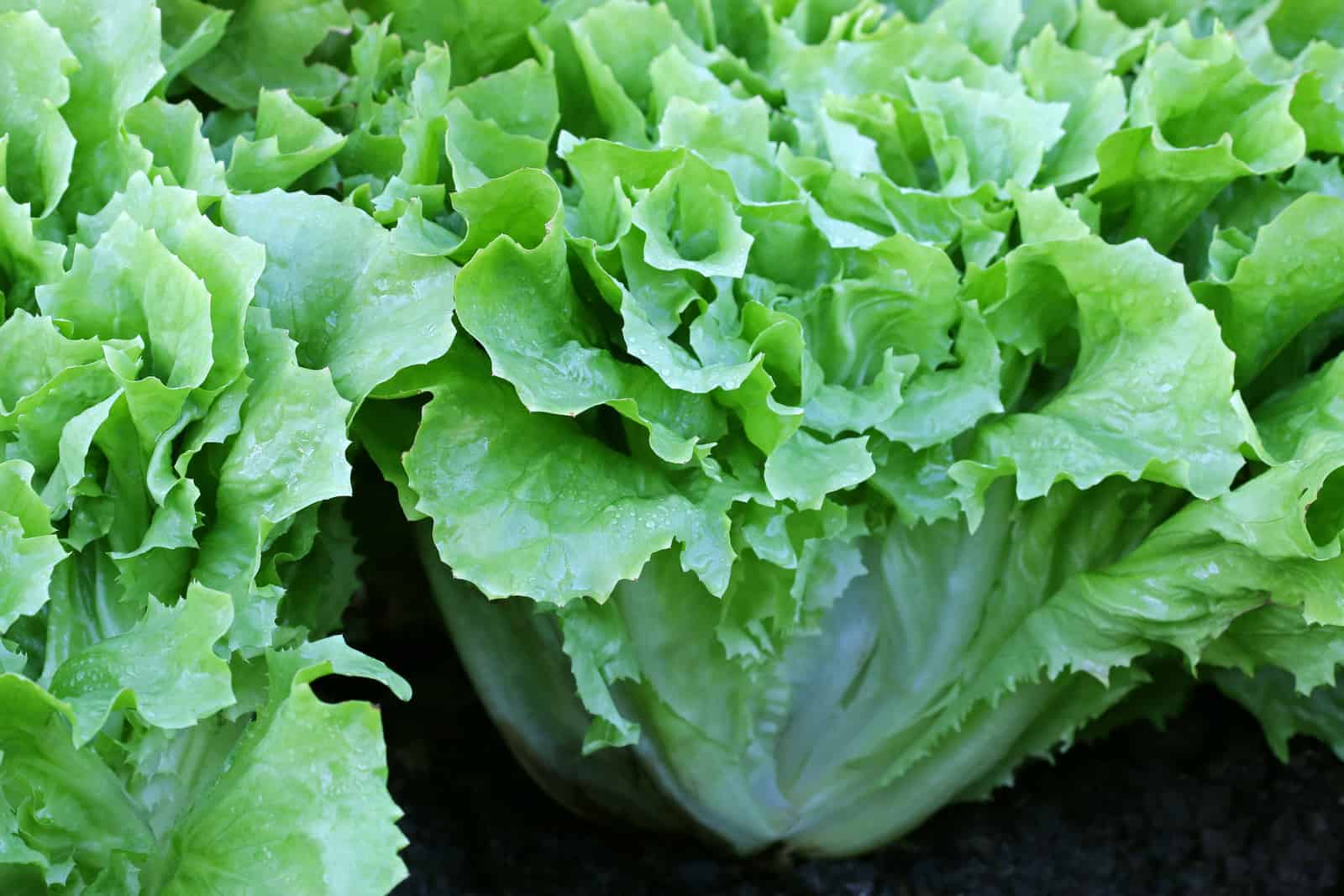
Get to know curly endive and escarole
- Cichorium endivia originated in the Mediterranean region during prehistoric times. Wild chicories grow in Europe, Western Asia, and Africa. The ancient Egyptians, Greeks, and Romans all cultivated broad-leafed endive, and the curly-leafed type developed later.
- The name Batavian endive or Batavia for broad-leafed endive refers to an ancient tribe called Batavi which once inhabited what is now Holland. Foods popular in that time and region were referred to as Batavian.
The botanical name for both curly endive and escarole is the same: Cichorium endiva.
Also of interest:
How to Grow Endive and Escarole
How to Harvest and Store Endive and Escarole
Related articles:
How to Plant and Grow Endive and Escarole
Edive and Escarole Seed Starting Tips
How to Harvest and Store Endive and Escarole
Escarole and Curly Endive Serving Tips
How to Grow Chicory and Belgian Endive
How to Cook and Serve Belgian Endive
How to Plant and Grow Radicchio
How to Harvest and Store Radicchio
Four Ways to Cook and Serve Radicchio
Articles of interest:
Best Herbs for Container Growing
Garden Planning Books at Amazon:
- Vegetable Garden Almanac & Planner
- Kitchen Garden Grower’s Guide Vegetable Encyclopedia
- Vegetable Garden Grower’s Guide
- Tomato Grower’s Answer Book
More kitchen tips:
Bring your harvest to the table. Kitchen prep tips and easy recipes for the vegetables you grow. Click below for vegetable prep and recipes you can use now.
- Almonds
- Apples
- Apricot
- Aprium
- Artichoke
- Arugula
- Asparagus
- Avocado
- Bamboo Shoots
- Banana
- Basil
- Beans, Dried
- Beans. Long
- Beans, Shell
- Beans, Snap
- Beets
- Bitter Melon
- Blackberry
- Bok Choy
- Broccoli
- Broccoli Raab
- Brussels Sprouts
- Cabbage
- Cardoon
- Carrots
- Cauliflower
- Celeriac
- Celery
- Chard
- Chayote Squash
- Cherimoya
- Cherries
- Chestnut
- Chickpea
- Chinese Cabbage
- Chives
- Cilantro
- Citron
- Clementine
- Collards
- Coriander
- Corn, Sweet
- Corn, Baby
- Corn Salad, Mache
- Cranberry
- Cress
- Cucumber
- Daikon
- Dandelion
- Dill
- Eggplant
- Endive, Belgian
- Endive and Escarole
- Fava Beans
- Fig
- Florence Fennel
- Garlic
- Ginger
- Grapefruit
- Grapes
- Guava
- Horseradish
- Jerusalem Artichoke
- Jicama
- Jujube
- Kale
- Kiwifruit
- Kohlrabi
- Kumquat
- Leeks
- Lemongrass
- Lemons
- Lettuce
- Lime
- Mache (Corn Salad)
- Mandarin Orange
- Mango
- Maple Syrup
- Marjoram
- Melons
- Michihili
- Mint
- Mizuna
- Mushrooms
- Mushrooms, Cremini
- Mustard Greens
- Napa Cabbage
- Nectarine
- Okra
- Olives
- Olive oil
- Onions
- Oranges
- Oregano
- Parsley
- Parsley Root
- Parsnips
- Passion Fruit
- Pawpaw
- Peaches
- Pears
- Peas, Garden Snap
- Peas, Snow
- Pei Tsai
- Peppers, Chili
- Peppers, Sweet
- Persimmon
- Pineapple
- Pineapple Guava
- Plantain
- Plums
- Pluots
- Pomegranate
- Potatoes
- Prickly Pear
- Pumpkin
- Quince
- Radicchio
- Radishes
- Raspberries
- Rosemary
- Rhubarb
- Rutabaga
- Sage
- Salsify
- Sauerkraut
- Savory
- Shallots
- Sorrel
- Spinach
- Squash, Summer
- Squash, Winter
- Strawberries
- Sunchokes
- Sunflower
- Sweet Potato
- Swiss Chard
- Tangerine
- Taro
- Tarragon
- Thyme
- Tomatillo
- Tomato
- Turnip
- Turnip Greens
- Yams















